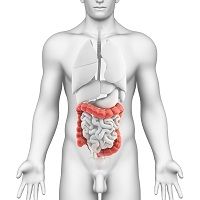Article
Intestinal Stem Cell Behavior May Impact Inflammatory Bowel Disease Treatments
Author(s):
When intestinal stem cells come into contact with prominent metabolites in the gut, the intestine is prohibited from repairing itself with those cells, according to findings published in Cell.

When intestinal stem cells come into contact with prominent metabolites in the gut, the intestine is prohibited from repairing itself with those cells, according to findings published in Cell.
Researchers from the Washington University in St. Louis cultured mice intestinal stem cells and screened metabolites to understand these pockets, which were known to exist for nearly 250 years, they explained.
The investigators observed the 100 most abundant metabolites in the cells to see their effect of the stem cell population. They noticed only butyrate appeared to slow down the stem cell expansion.
“When there’s damage to the lining of the intestine — whether from acute injury or disease – stem cells have to divide to repair that damage,” the study’s senior author Thomas Stappenbeck, MD, PhD explained in a statement. “Inhibiting stem cell proliferation could be an unfortunate side effect of butyrate treatment.”
When the mice were given additional butyrate, the intestinal stem cells remained unchanged.
This was true no matter how much butyrate the mice were administered, the researchers reported.
The researchers questioned whether the pockets, or crypts, were protecting the stem cells inside the mice’s guts and decided to culture the stem cells in the lab outside of their protective pockets.
The researchers measured the levels of butyrate on the inner surfaces of the intestine, but found that the levels were much lower in the pockets where the stem cells are stored.
“We think these butyrate producing bacteria are one of the driving forces in the evolution of crypts, but we need to do a systematic survey to find out whether there is a correlation between the animals that have intestinal crypts and the animals that carry butyrate producing bacteria,” Stappenbeck said, noting that not all vertebrates have the pockets, but most do. For example, zebra fish do not have the pockets but their intestinal system functions as if they do.
Even though Stappenbeck added, “a lot more work needs to be done before we can draw any definitive conclusions,” the researchers believed their findings could point to exactly what the limitations of inflammatory bowel disease (IBD) treatments are. The researchers extrapolated that because IBD results from injury or damage in the intestine, the butyrate may be a cause of the body’s inability to repair itself.




